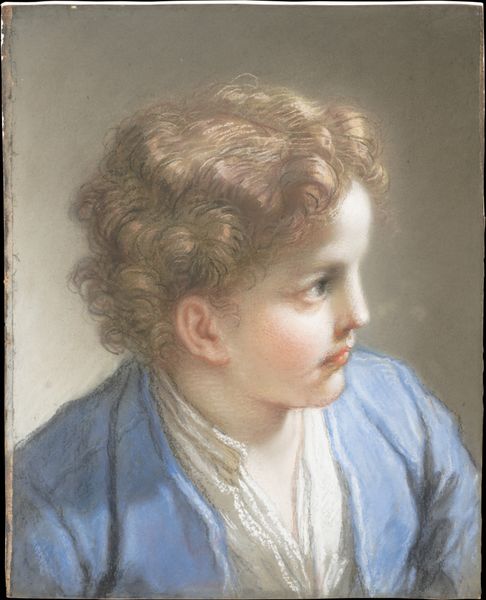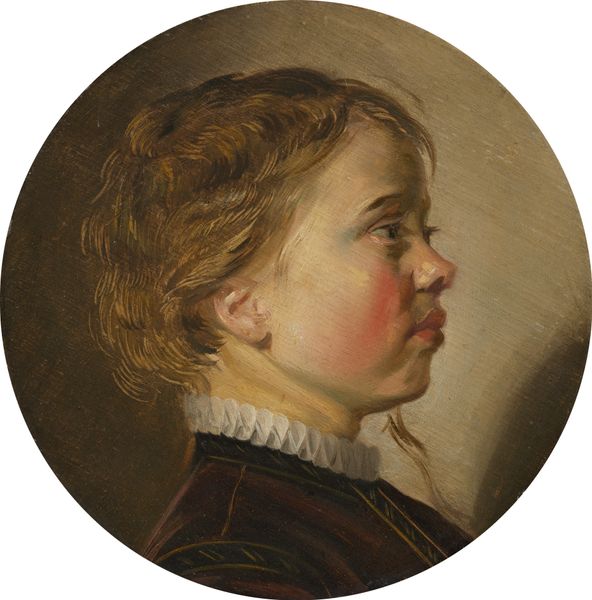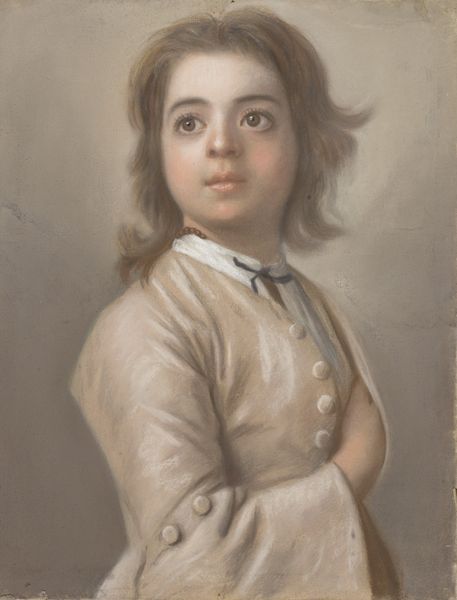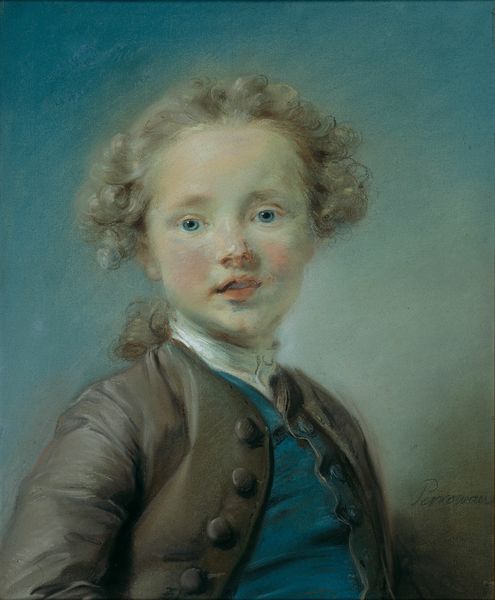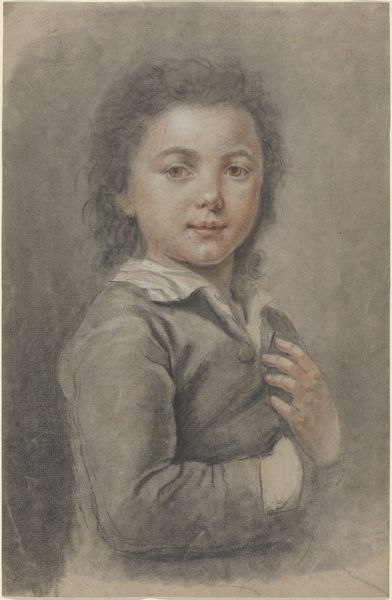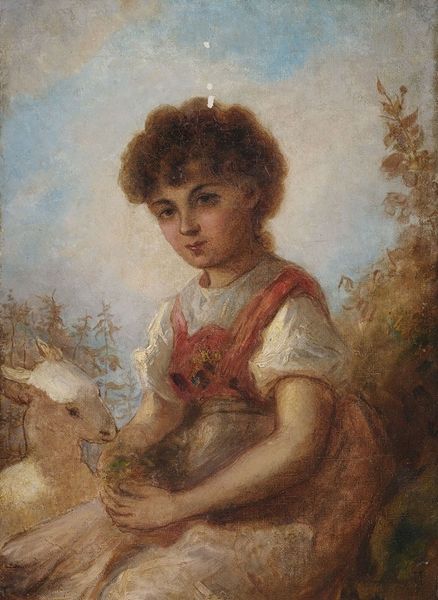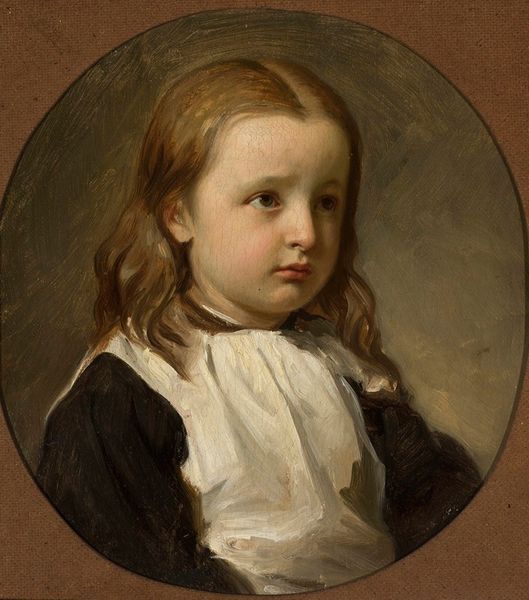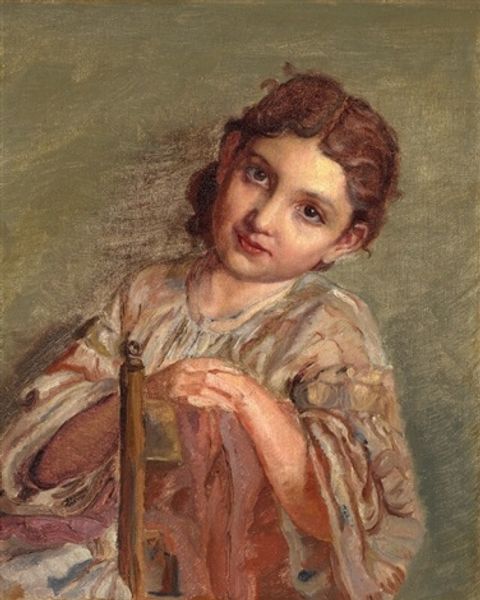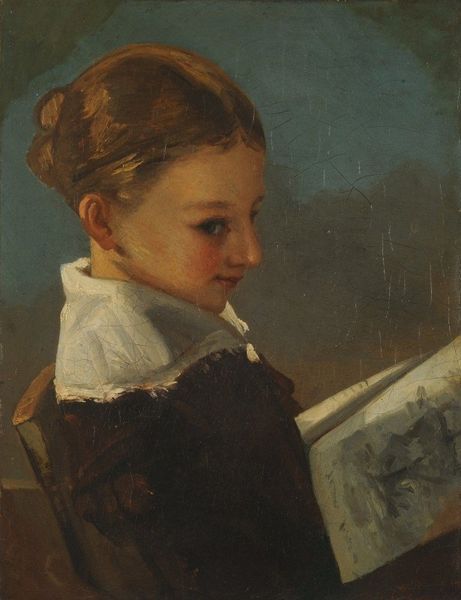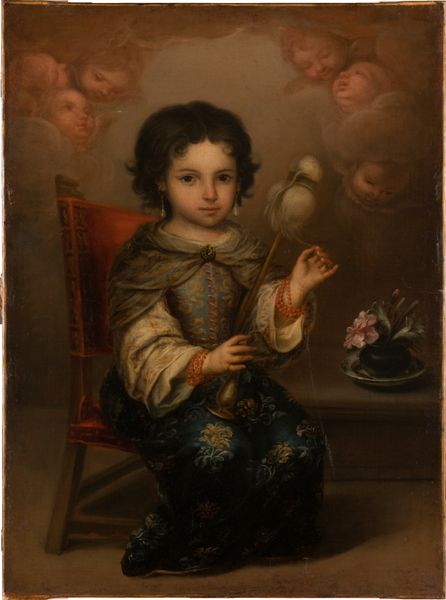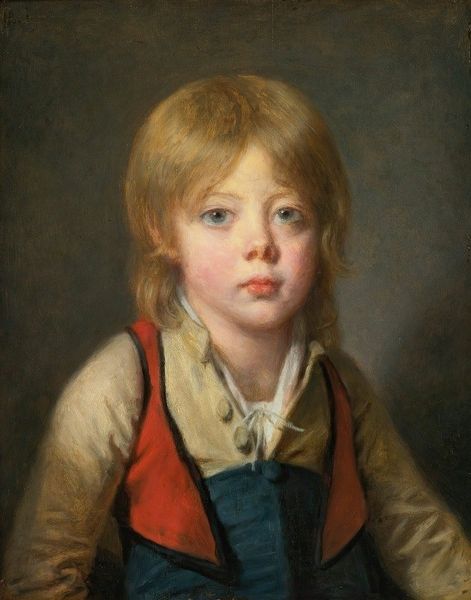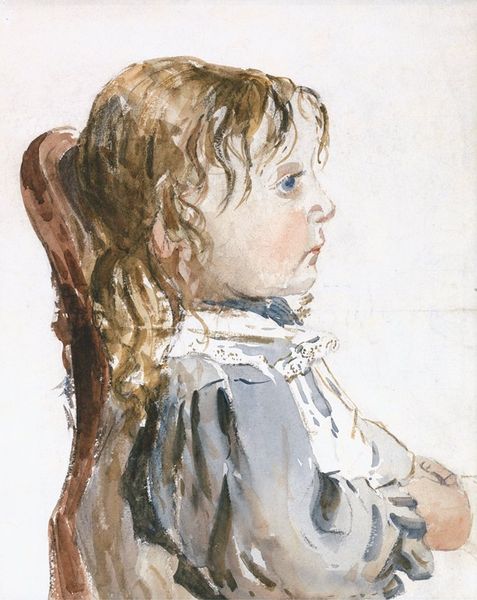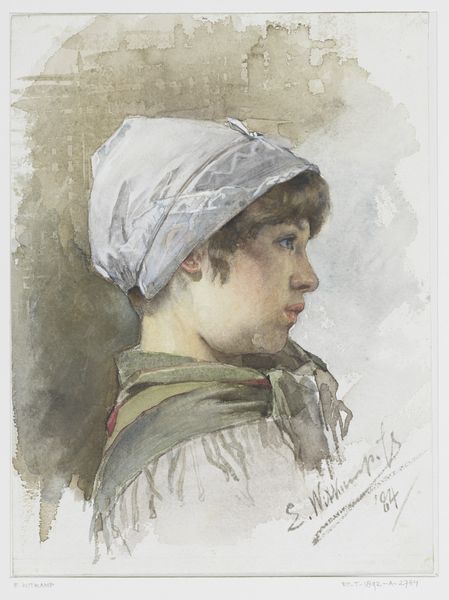
drawing, paper, pastel
#
portrait
#
drawing
#
paper
#
portrait drawing
#
pastel
#
academic-art
#
rococo
Dimensions: 308 × 243 mm
Copyright: Public Domain
Editor: Here we have Francois Boucher's "Boy with a Carrot" from 1738, made with pastel on paper. I'm immediately struck by how soft everything looks. There's a certain sweetness in his expression too. What captures your attention most when you look at it? Curator: Oh, the rococo charm just radiates, doesn't it? But it's more than just sweetness for me. Look at the fleeting expression—almost a smirk, like he's in on some delightful secret. Boucher was masterful at capturing a sense of momentary pleasure. I always wonder, what IS the deal with the carrot? Do you think it’s just a playful prop, or might there be more to it? Editor: A secret, huh? Maybe! I'd assumed the carrot was just… well, a carrot! Symbolism, you think? Is it perhaps a symbol of… something? Curator: Oh, absolutely, artists rarely include items without intent. And with Boucher's playful nature, it could be anything from a sly nod to fertility—carrots *do* resemble a certain… shall we say, object? –to a comment on the simple pleasures in life. Look at how delicately he renders the light on the boy's cheek and then contrasts that with the almost aggressively rendered texture of the carrot’s fronds scratching against his coat. Juxtaposition, my dear! What a mind! Editor: Wow, I hadn't considered any of that! Now I'm seeing the texture, and that slight knowing smile differently. All that from a carrot, it’s incredible. Curator: Exactly! Boucher's seemingly lighthearted works often held layers of complexity, reflections on the desires and joys—however fleeting—of his time. We can either swallow them whole, like a raw carrot, or savour the subtleties, nibbling thoughtfully. It changes the whole painting, doesn’t it?
Comments
No comments
Be the first to comment and join the conversation on the ultimate creative platform.
